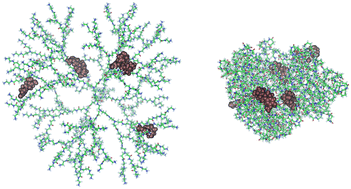Influence of dendrimer surface charge on the bioactivity of 2-methoxyestradiol complexed with dendrimers
Abstract
We report the complexation of a potential anticancer agent

* Corresponding authors
a
State Key Laboratory for Modification of Chemical Fibers and Polymer Materials, Donghua University, Shanghai, P. R. China
E-mail:
xshi@dhu.edu.cn
b College of Chemistry, Chemical Engineering and Biotechnology, Shanghai, P. R. China
c
miRcore, Ann Arbor, MI, USA
E-mail:
inhanlee99@gmail.com
d
Michigan Nanotechnology Institute for Medicine and Biological Sciences, University of Michigan, Ann Arbor, MI, USA
E-mail:
shidasui@umich.edu
We report the complexation of a potential anticancer agent

 Please wait while we load your content...
Something went wrong. Try again?
Please wait while we load your content...
Something went wrong. Try again?
X. Shi, I. Lee, X. Chen, M. Shen, S. Xiao, M. Zhu, J. R. Baker and S. H. Wang, Soft Matter, 2010, 6, 2539 DOI: 10.1039/B925274F
To request permission to reproduce material from this article, please go to the Copyright Clearance Center request page.
If you are an author contributing to an RSC publication, you do not need to request permission provided correct acknowledgement is given.
If you are the author of this article, you do not need to request permission to reproduce figures and diagrams provided correct acknowledgement is given. If you want to reproduce the whole article in a third-party publication (excluding your thesis/dissertation for which permission is not required) please go to the Copyright Clearance Center request page.
Read more about how to correctly acknowledge RSC content.
 Fetching data from CrossRef.
Fetching data from CrossRef.
This may take some time to load.
Loading related content
